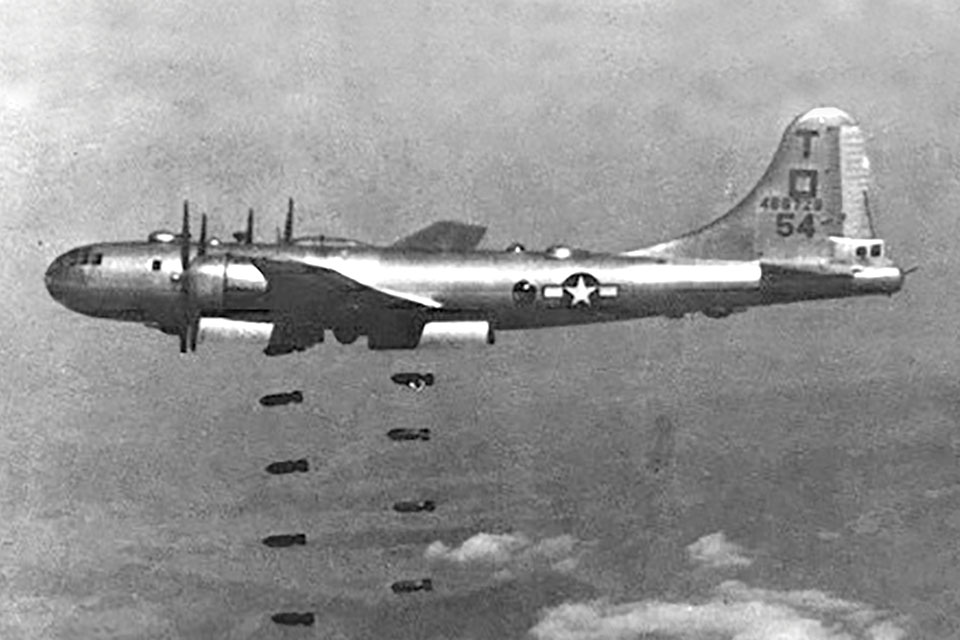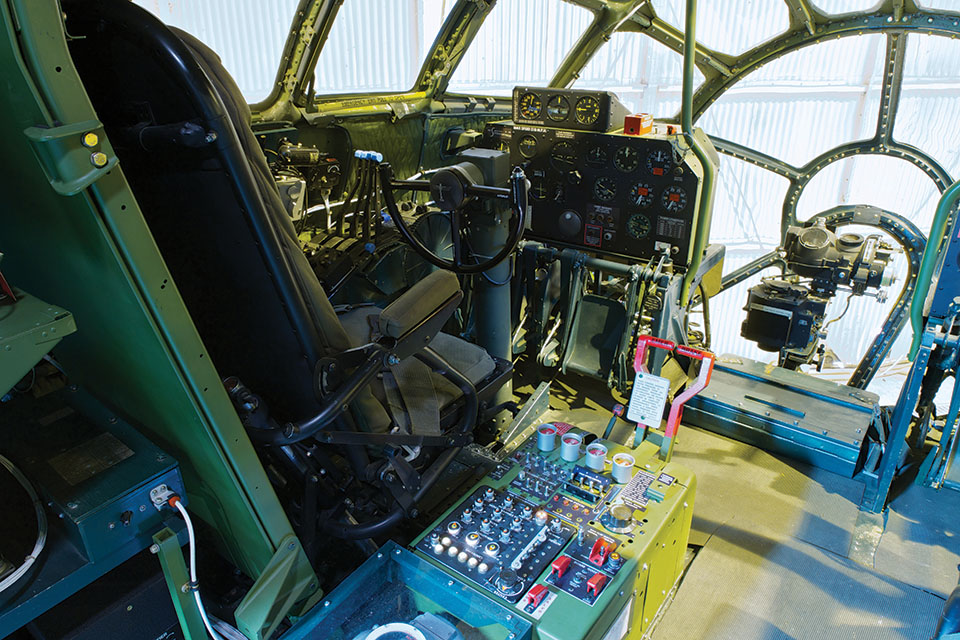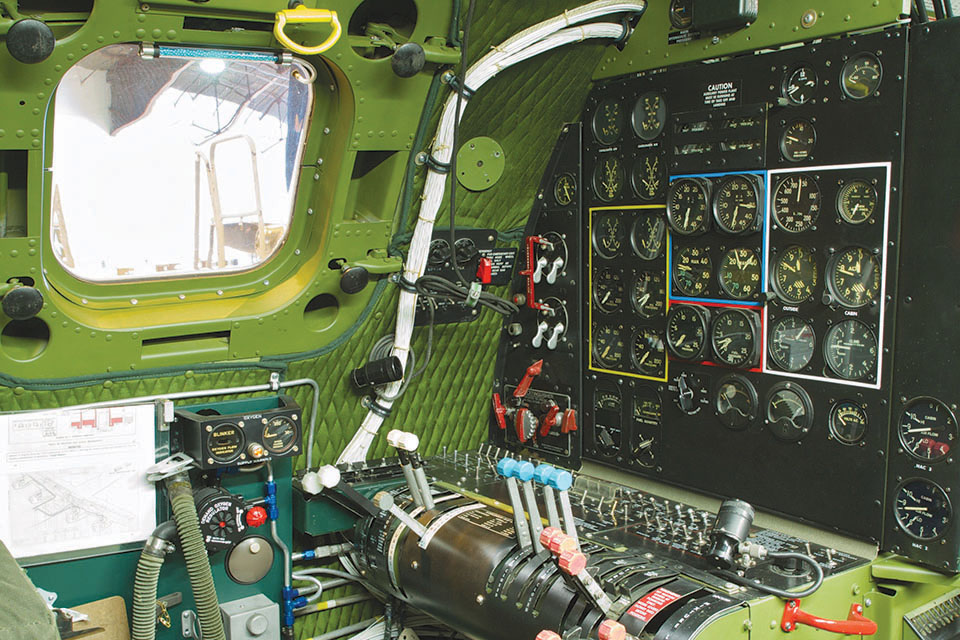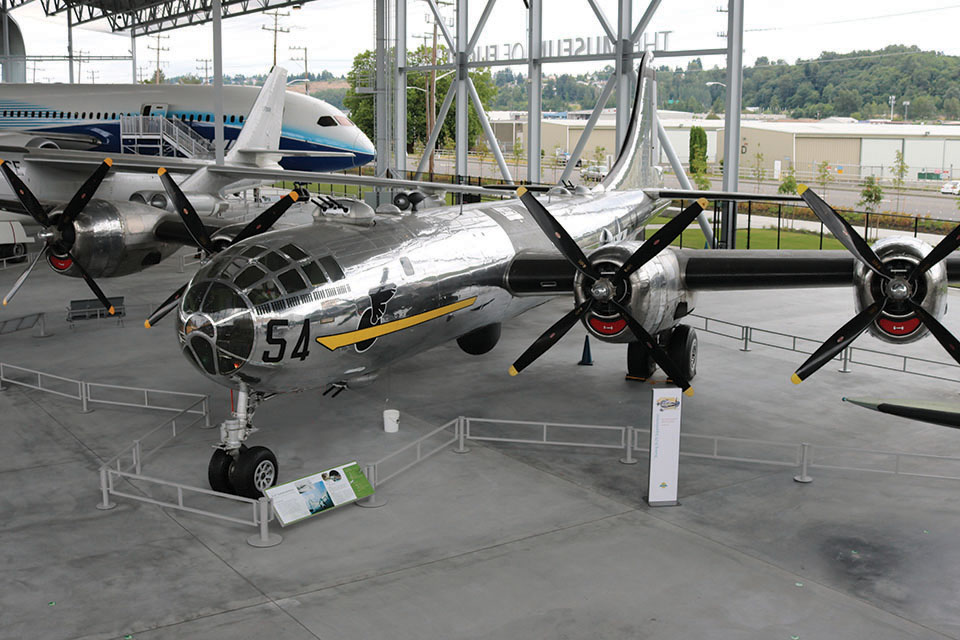The Seattle Museum of Flight’s meticulous B-29 restoration has returned most of the veteran bomber’s controls to working order.
Given its location on historic Boeing Field, it’s not surprising that Seattle’s Museum of Flight exhibits a wide variety of Boeing aircraft. Among its latest restorations is another Boeing product, a combat-veteran B-29 Superfortress. The shiny new bomber, serial no. 44-69729, rolled out of the Boeing plant in Wichita, Kan., on New Year’s Day 1945. Accepted by the U.S. Army Air Forces on January 4, the new Superfortress had its “address” prominently displayed on the broad, tall vertical stabilizer: a black “T” for the 498th Bombardment Group (Very Heavy) above a square for the 73rd Bomb Wing and the number 54 as the 54th aircraft assigned to the 875th Squadron.
T Square 54’s first mission, on the night of March 9-10, was a low-level incendiary raid on Tokyo that burned 16 square miles of the city and marked a change in tactics for the Twentieth Air Force bombers. Over the next several weeks T54 flew missions over Osaka, Kobe and Nagoya to mark targets in advance of the main bomber stream and participated in attacks. During a May 23 night raid, an anti-aircraft shell set the no. 1 engine on fire, but the B-29 made it back on the other three. On August 8, while the radioactive fires were still burning in Hiroshima, T54 flew its 37th and final mission to industrial targets in Yawata.

During the Cold War the veteran bomber was sent back to Boeing’s Wichita plant for conversion as a KB-29 aerial tanker. At Biggs Air Force Base in Texas, no. 729 was part of Strategic Air Command’s 95th Bomb Wing, flying missions to the UK. In 1956, after 11 years of service, it was finally retired from the Air Force and given to the Navy.
Transported to the Weapons Testing Center at Naval Air Station China Lake, high in the California desert, 729 joined several other B-29s as bombing targets for naval aviators. They had little luck in hitting the old veteran. In the 1970s the Air Force, realizing there were few Superfortresses left, ordered a stop to using them as targets. By the early 1980s 729 was among the last salvageable wartime B-29s left. In 1986 the dilapidated bomber was trucked in pieces to Lowry Air Force Base in Colorado, where it underwent its first restoration.
In 1993, with Lowry designated for closure, the Museum of Flight began negotiations aimed at restoring 729 to its original appearance. Retired AT&T engineer Dale Thompson eventually oversaw the project.
Thompson said the bomber was in bad shape when Lowry first received it. “The aluminum skin was very weathered, some of the windows were broken, so the desert dust had blown in and covered everything,” he noted. “The tires were all flat and cracked. The engines were frozen, with pools of solid oil in the nacelles. All the wiring and cabling was gone or degraded. The wartime bombing equipment was gone, replaced by the air tanker gear. The control surfaces are fabric over an aluminum frame, and after all those years sitting in the sun at China Lake they were nothing more than shreds.”

Lowry restored the exterior and repaired the damage, but what Thompson and his team faced was far more daunting. The Superfortress was in effect a huge metal jigsaw puzzle with dozens of missing pieces, some of which no longer existed. Rare wartime armament, radar, navigation, communications and bombing equipment had to be found or machined from original 1944 specifications. All four engines had to be stripped down and rebuilt, along with the hydraulics, instruments, flight controls, and oxygen and interphone systems.
Several hundred volunteers gave their time to the old bomber. “We had ex-USAF personnel, people who worked at Boeing and a lot of folks who just offered their time and effort,” reported Thompson. Boeing opened their archives to the project, allowing the team to copy any drawings, diagrams and photos they needed.
“The cockpit is about 90 percent complete,” said Thompson. “During the war the inner skin was just bare aluminum, but at all the crew stations it was insulated and covered with cotton fabric. All the cotton fabric is in place now. The tunnel through the bomb bay is lined too. We have the Norden bombsight and it actually works. We had it running and even an hour after it was turned off, the gyros were still spinning. Beautiful machinery. It looks brand-new.

“We had machinists who custom-made parts from original Boeing drawings. Syd Baker built bomb racks from scratch in his garage. All the instrument panels and labels are there, and their surfaces have been done with the proper black finish. It looks absolutely new.
“The control cabling has been replaced,” continued Thompson. “The pulleys and guides are perfect and they operate the control surfaces. The command radios do work. Some licensed ham operators were on the team. We had two wartime pilots in the B-17 and B-29 and told them to talk and simulate a mission. They were so happy to use those radios again.”
Thompson said the team worked a deal with Travis Air Force Base to wrangle up some critical parts. “It’s the only B-29 in the world where all five turrets work,” he proudly noted. “We invited a B-29 gunner to come on board. He settled into his old seat at the gunsight and said, ‘I wish I could fire these babies again.’ So I told him, ‘Go ahead. It works.’ This guy takes the handgrips and twists it around. The turret turns and the guns elevate. He was overjoyed, just like a kid. Then I told him to fire the guns. He did, and this chattering roar made him jump,” Thompson laughed. “We had this recorded sound of the .50s firing when he pulled the trigger. He was smiling from ear to ear.”
Today the revitalized veteran bomber is on display in the museum’s Aviation Pavilion. You can take a 360-degree virtual tour of the B-29’s immaculate interior at museumofflight.org.
This article appeared in the January 2021 issue of Aviation History. To subscribe click here!





